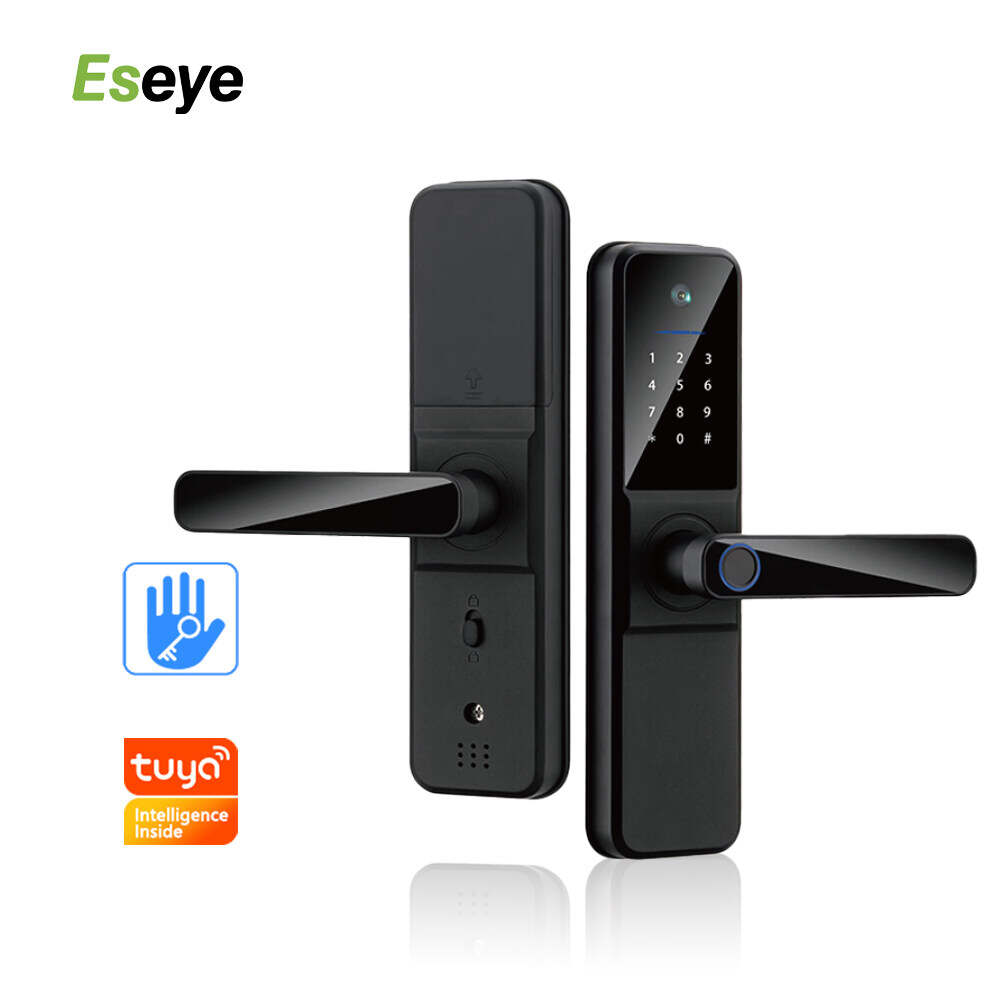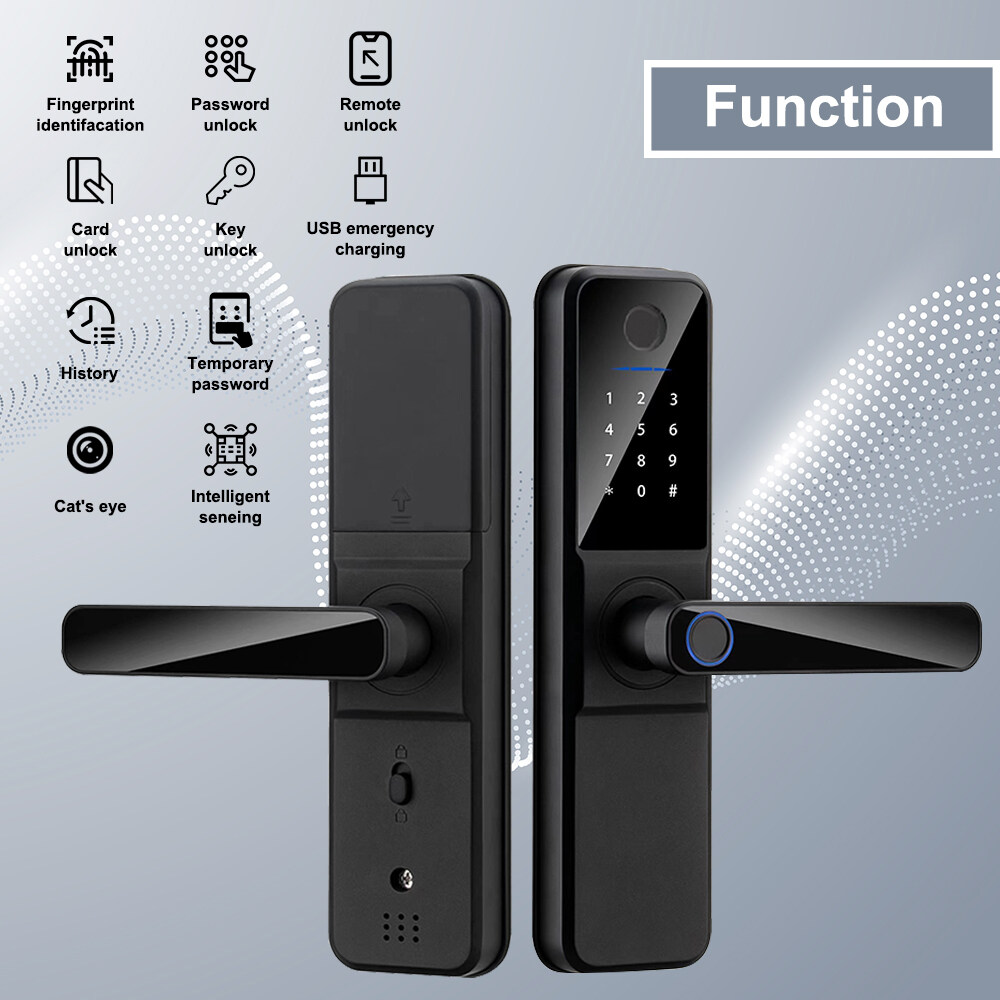Email cannot be empty
Password cannot be empty
Email format error
Email cannot be empty
Email already exists
6-20 characters(letters plus numbers only)
The password is inconsistent
Email format error
Email cannot be empty
Email does not exist
6-20 characters(letters plus numbers only)
The password is inconsistent


The Future of Home Security with WiFi Fingerprint Door Locks
In today’s world, home security has become more advanced and accessible than ever. With technology integrated into nearly every part of our daily lives, it’s no surprise that WiFi fingerprint door locks are quickly gaining popularity. Gone are the days of fumbling for keys or worrying about lost spares—these modern locks use biometric fingerprint technology combined with WiFi connectivity, providing homeowners with seamless access control and peace of mind. In this article, we’ll dive into the numerous benefits of WiFi fingerprint door locks, explore key features to look for, and discuss why they’re the future of home security.
Why Consider a WiFi Fingerprint Door Lock?
Convenience and Ease of Access
One of the most appealing aspects of a WiFi fingerprint door lock is the convenience it provides. No more searching for keys or dealing with forgotten passcodes; with just a touch of your finger, you gain instant access to your home. WiFi-enabled locks also allow you to control access remotely, which is perfect for letting in guests, family members, or service providers without having to be physically present.
Enhanced Security and Peace of Mind
Traditional locks are susceptible to picking, and even digital keypads are not immune to code hacking. However, fingerprint-based entry is both secure and highly personalized, as each fingerprint is unique. Paired with WiFi, these locks offer an additional layer of security by allowing real-time monitoring and notifications, so you’re always aware of who’s entering and exiting your home. This combination provides robust security that can deter potential intruders and enhance the safety of your property.
Key Features of a Quality WiFi Fingerprint Door Lock
1. Advanced Fingerprint Recognition Technology
A WiFi fingerprint door lock relies heavily on the quality of its fingerprint scanner. Look for a lock with a high-resolution scanner that can quickly and accurately detect fingerprints, minimizing the chance of failed or delayed access. Many premium models use capacitive sensors, which read the fingerprint pattern by detecting the electrical properties of the skin. This is not only faster but also more accurate than optical scanners.
2. WiFi Connectivity and Remote Access
WiFi capability is a game-changer in door lock technology. With a WiFi fingerprint door lock, you can manage and control access through your smartphone, even when you’re miles away. Many locks come with an app that allows you to monitor access logs, set temporary codes, and even receive alerts if someone attempts to access your home without authorization. Some apps even support integration with smart home systems, allowing for seamless connection with other devices.
3. Battery Backup and Low-Power Notifications
Battery life is essential for WiFi-enabled locks since a dead battery could leave you locked out. Quality locks come with energy-efficient designs and offer months of use on a single charge. Additionally, low-battery alerts through the app ensure you’re always informed. Some models even come with emergency power options, like USB ports, so you can quickly power the lock in case of an unexpected battery failure.
4. Multiple Access Methods
While fingerprint recognition may be the primary access method, many WiFi fingerprint door locks provide alternative entry options. These can include keypad codes, RFID cards, or even traditional keys as a backup. Having multiple access methods can be handy in case of a technical issue or when granting temporary access to guests who may not be comfortable with fingerprint scanning.
Advantages of Using a WiFi Fingerprint Door Lock
Increased Control Over Home Access
For those who frequently have visitors, like family members or cleaning staff, WiFi fingerprint locks provide an ideal solution. Using the associated app, you can create temporary access permissions for specific users. Once their access period expires, their permissions are automatically revoked, adding an additional layer of security and reducing the need for physical keys.
Real-Time Monitoring and Notifications
With WiFi-enabled locks, homeowners can receive real-time notifications whenever someone enters or exits their property. This feature is particularly beneficial for parents wanting to know when their children arrive home from school or for individuals who rent out properties through services like Airbnb. Knowing exactly who’s accessing your home and when allows for a greater sense of control and reassurance.
Long-Term Cost Efficiency
While the initial cost of a WiFi fingerprint door lock may be higher than traditional locks, it can offer significant cost savings over time. By eliminating the need for physical keys, you reduce the likelihood of lost key replacements or rekeying your home due to security breaches. Furthermore, these locks are durable and require less maintenance than traditional locks, making them a wise investment for long-term use.

How to Choose the Best WiFi Fingerprint Door Lock
Check Compatibility with Smart Home Systems
If you’re already using a smart home system, ensure that your chosen WiFi fingerprint door lock is compatible with it. Many models work with platforms like Alexa, Google Home, and Apple HomeKit, allowing you to create custom automations and voice-activated commands. This can enhance your overall smart home experience, creating a fully integrated and secure environment.
Prioritize Robust Security Features
When evaluating locks, prioritize those with advanced security features like AES encryption, two-factor authentication for app access, and tamper alerts. These additional measures safeguard your lock against hacking attempts, keeping your home even more secure. Biometric data should be securely stored locally on the lock, not in the cloud, to avoid potential breaches.
Evaluate Durability and Weather Resistance
A WiFi fingerprint door lock should be robust enough to withstand various weather conditions, especially if it’s for an exterior door. Look for locks that are waterproof and dust-resistant, often indicated by an IP rating. Locks with a metal construction tend to be more durable than those made from plastic, providing better longevity and resistance to wear and tear.
Setting Up Your WiFi Fingerprint Door Lock
Installation Process
Most WiFi fingerprint door locks are designed for easy DIY installation. Generally, they fit into the existing door cutouts and come with detailed installation guides. If you’re unsure about installation, hiring a professional locksmith can help ensure the lock is securely installed and fully functional.
Configuring the Mobile App
Once installed, connect the lock to its companion app to fully unlock its potential. Start by enrolling your fingerprint, setting up any additional access codes, and configuring notification settings. Be sure to review the app’s privacy settings to ensure your data is protected.
Frequently Asked Questions
Are WiFi Fingerprint Door Locks Secure?
Yes, WiFi fingerprint door locks are secure. They combine biometric access with WiFi-enabled monitoring, making them safer than traditional locks. Biometric data is unique to each individual, significantly reducing the chance of unauthorized access.
What Happens if the WiFi Connection is Lost?
Most WiFi fingerprint door locks store fingerprint data locally, so they will continue to function even if the WiFi is down. You may not receive remote access or notifications, but you’ll still be able to use your fingerprint or any backup access methods.
How Long Does the Battery Last?
Battery life depends on usage, but many models last for six months to a year on a single charge. Low-battery notifications and backup power options ensure you’re never locked out unexpectedly.
The Future of Home Security: Why WiFi Fingerprint Door Locks Are Here to Stay
The increasing adoption of WiFi fingerprint door locks reflects a growing preference for convenience, security, and integration in home devices. These locks provide an efficient solution to common security challenges, blending biometric accuracy with real-time access control. As smart home technology advances, WiFi fingerprint locks are set to become a cornerstone in modern home security systems.
Final Thoughts
Investing in a WiFi fingerprint door lock is a forward-thinking choice that enhances both security and convenience. From the ability to control access remotely to the peace of mind offered by fingerprint authentication, these locks represent a sophisticated solution for today’s smart homes. With a variety of options available on the market, you can find a lock that matches your security needs, style preferences, and budget, ensuring that your home is protected and accessible in the smartest way possible.

